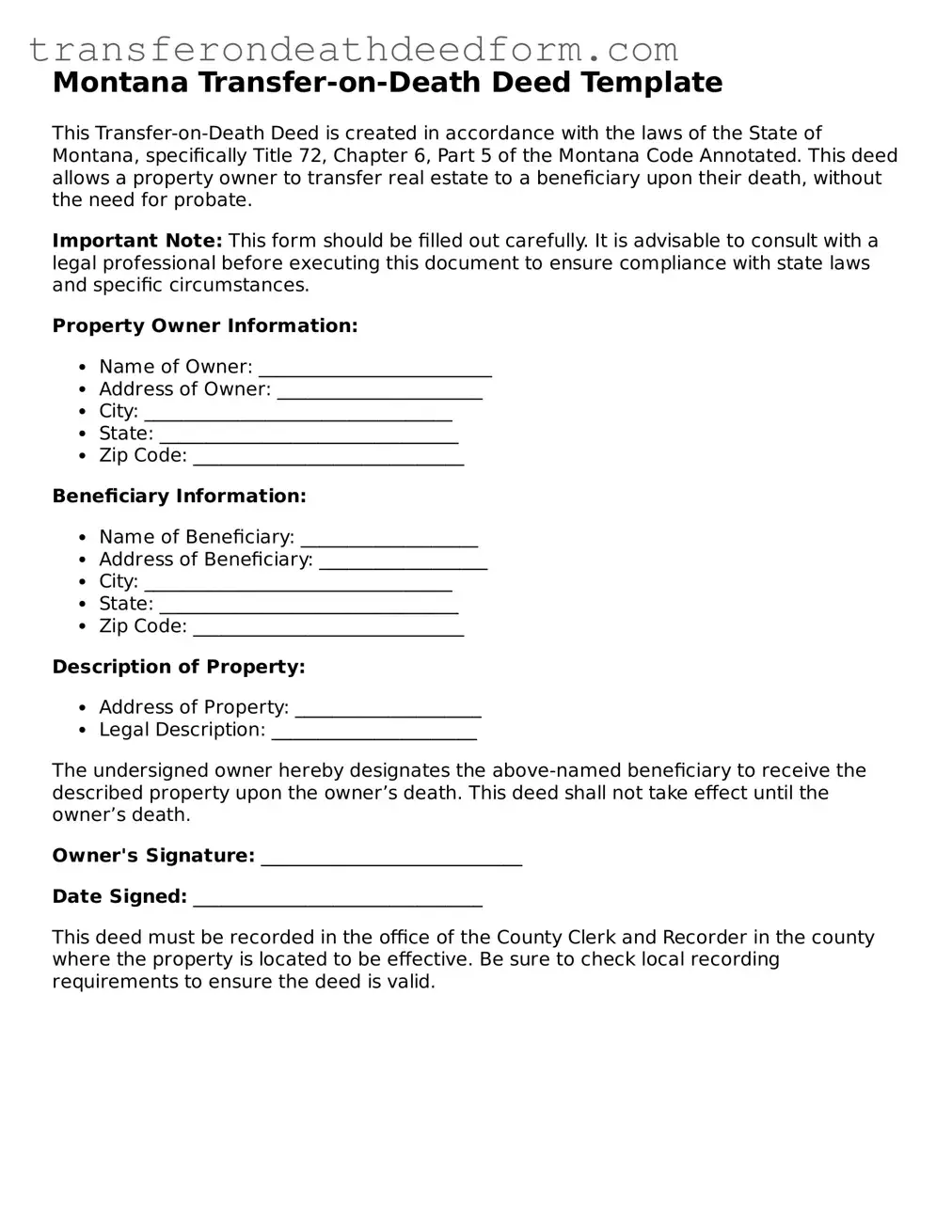Montana Transfer-on-Death Deed Template
This Transfer-on-Death Deed is created in accordance with the laws of the State of Montana, specifically Title 72, Chapter 6, Part 5 of the Montana Code Annotated. This deed allows a property owner to transfer real estate to a beneficiary upon their death, without the need for probate.
Important Note: This form should be filled out carefully. It is advisable to consult with a legal professional before executing this document to ensure compliance with state laws and specific circumstances.
Property Owner Information:
- Name of Owner: _________________________
- Address of Owner: ______________________
- City: _________________________________
- State: ________________________________
- Zip Code: _____________________________
Beneficiary Information:
- Name of Beneficiary: ___________________
- Address of Beneficiary: __________________
- City: _________________________________
- State: ________________________________
- Zip Code: _____________________________
Description of Property:
- Address of Property: ____________________
- Legal Description: ______________________
The undersigned owner hereby designates the above-named beneficiary to receive the described property upon the owner’s death. This deed shall not take effect until the owner’s death.
Owner's Signature: ____________________________
Date Signed: _______________________________
This deed must be recorded in the office of the County Clerk and Recorder in the county where the property is located to be effective. Be sure to check local recording requirements to ensure the deed is valid.
